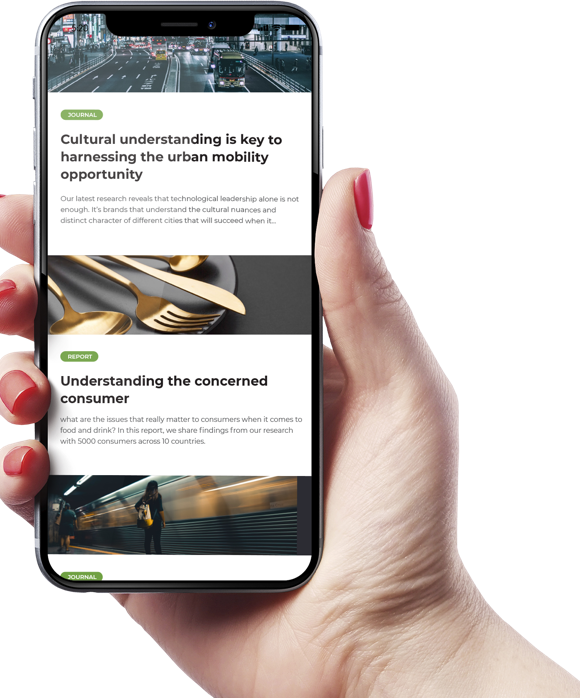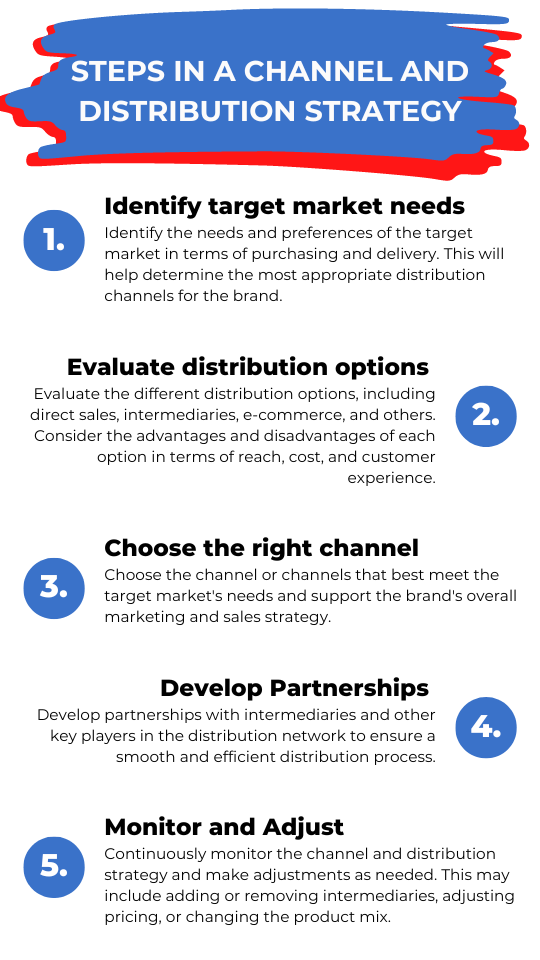For Western brands, the allure of tapping into Asia’s vibrant and diverse markets has never been stronger. Rapid urbanization, the rise of a burgeoning middle class, and the relentless adoption of digital technologies have transformed this continent into an economic powerhouse characterized by boundless opportunities and untapped potential.
And with its staggering population of over 4.7 billion accounting for 39% of the world’s GDP, Asia stands as an irresistible frontier for Western brands seeking expansion beyond their borders.
Yet, venturing into these territories is no simple feat. For Western brands, market entry into Asia can be thrilling and intimidating. With each country, steeped in unique cultures, traditions, and consumer behaviors, it demands astute observation, nuanced strategies, and careful consideration of the local landscape.
Decoding the Asian Enigma: Choosing Your Entry Point
As brands set their sights on the vast expanse of Asia, the question that looms large is: Where to begin? Selecting the optimal entry point into Asia is a critical decision that can significantly impact a brand’s success.
The continent’s immense diversity, contrasting cultures, and varying economic landscapes demand a strategic approach to market entry. A meticulous analysis of market potential, leveraging data-driven market research, and understanding the intricacies of each country’s culture are essential components of this strategic decision.
Factors to Consider When Selecting the Initial Market(s) for Entry
A thorough understanding of the target audience is the foundation of effective market selection. Factors such as demographics, consumer preferences, purchasing power, and cultural inclinations vary significantly across Asian countries. Conducting in-depth market research that considers macroeconomic indicators and micro-level consumer insights is vital. Additionally, evaluating the competitive landscape and the presence of rival brands in each market can inform decisions on where to focus initial efforts.
Analyzing Market Potential
As the saying goes, “Know thy market.” Conducting thorough market research is the cornerstone of effective decision-making when entering Asia. Analyze each target country’s economic indicators, consumer trends, and industry outlooks. Consider the market’s size and growth potential, competitors’ presence, and consumers’ receptiveness to foreign brands. With data-driven insights, brands can confidently gauge the viability and allure of each market.
Market Research and Analysis Techniques
Effective market research is a blend of art and science. Apart from traditional research methodologies, digital data analytics and social listening can provide real-time consumer sentiment and identify emerging trends. Leveraging partnerships with local market research firms and consulting agencies, like Kadence International, can yield valuable insights into the nuances of each market. Such data-driven approaches enable brands to make informed decisions, mitigating the risks of entering unfamiliar territories.
Pros and Cons of Entering a Single Market Versus Multiple Markets Simultaneously
Choosing between a single-market entry and a multimarket entry strategy depends on a brand’s resources, risk appetite, and long-term objectives. Initially, focusing on a single market allows brands to direct their efforts and resources to gain a strong foothold. This approach is particularly advantageous for brands with limited budgets and those seeking to acclimate to the intricacies of one market at a time. Conversely, a multimarket entry strategy can provide diversification and faster market penetration if executed effectively. However, it also demands significant investments in market research, localization, and brand adaptation.
Balancing Ambitions with Realistic Market Entry Plans
Entering multiple Asian markets simultaneously can be an ambitious endeavor, but balancing aspirations with realistic planning is crucial. Brands must consider their operational capabilities, supply chain readiness, and adaptability to cultural nuances. Establishing a phased market entry approach can mitigate risks and allow for learning and adjustment as the brand expands its presence across different markets.
Navigating the Diversity and Uniqueness of Each Market
One of the defining characteristics of Asia is its incredible diversity, even within individual markets. Each country encompasses a multitude of regions, languages, and cultural practices, necessitating a nuanced understanding of local preferences. What works in one city may not resonate in another, and brands must craft strategies that account for such regional differences. Flexibility and adaptability are key traits for brands aiming to thrive in the diverse landscapes of Asia.
Critical Considerations for Market Entry: Embracing Cultural Nuances and Regulatory Landscapes
Entering Asia requires more than just a business strategy; it demands a profound understanding of cultural nuances and the ability to navigate complex regulatory frameworks. Brands must navigate the intricacies of diverse markets with cultural sensitivity, recognizing that each country holds unique opportunities and challenges.
Cultural Aspects and Consumer Preferences
Culture shapes consumer behaviors, and adapting marketing strategies to align with local customs is paramount for success. This includes everything from product packaging and brand messaging to promotional activities and customer engagement. What works in one country might not necessarily translate well to another, making cultural sensitivity an indispensable skill. Brands must invest time and effort in understanding each target market’s values, beliefs, and social norms to tailor their approach accordingly.
Localized Marketing Strategies: A Bridge to Consumer Hearts
Central to successful market entry in Asia is the art of localization. It involves more than just language translation; it’s about embracing the heart and soul of each culture. Whether incorporating local festivals and traditions into marketing campaigns or adjusting product features to cater to specific preferences, personalized experiences resonate deeply with consumers.
Leveraging Digital Marketing and Social Media Platforms
In Asia, digital connectivity is revolutionizing consumer behavior. E-commerce platforms, social media channels, and mobile apps have become central to daily life, providing unparalleled opportunities for brands to engage with consumers. Social media marketing is particularly powerful, with influencers and user-generated content significantly shaping brand perception. Embracing digital channels and leveraging influencer partnerships can amplify a brand’s reach and foster authentic connections with target audiences.
Navigating Legal and Regulatory Frameworks
Regulatory compliance is a critical aspect of market entry that cannot be overlooked. Each Asian country has laws and regulations governing business operations, advertising, and product distribution. Brands must familiarize themselves with local trade policies, intellectual property rights, and labeling requirements. Collaborating with local legal experts or partnering with local entities can help ensure adherence to the legal framework, safeguarding the brand’s reputation and minimizing potential risks.
Competitor Analysis and the Competitive Landscape
Understanding the competitive landscape is indispensable for devising effective market entry strategies. Competitor analysis provides insights into existing players, their strengths, weaknesses, and market positioning. Brands can identify gaps in the market, unmet consumer needs, and opportunities for differentiation. By leveraging this knowledge, brands can craft compelling value propositions that resonate with consumers and set them apart.
The Art of Cultural Localization: Winning Hearts and Minds
The journey to winning hearts and minds in Asia necessitates an unwavering commitment to cultural localization. Brands that seek to leave a lasting impression in these diverse markets, language, imagery, cultural values, and local celebrations serve as the threads that weave together a compelling brand narrative.
By embracing the unique identities of each Asian market and fostering genuine connections, Western brands can break barriers, earn loyalty, and thrive amidst the captivating tapestry of Asia’s rich and multifaceted cultures.
Language Matters: Bridging the Communication Divide
Language serves as the gateway to culture. Acknowledging the linguistic diversity in Asia is fundamental for effective communication. In countries like India, Indonesia, and the Philippines, where numerous languages coexist, tailoring marketing messages to regional dialects can create a sense of familiarity and accessibility. Additionally, translating content accurately is imperative, as linguistic errors can harm brand perception. Embrace the power of local linguists and copywriters to ensure precision and cultural relevance in all communications.
Visual Storytelling: Embracing Cultural Imagery
A picture speaks a thousand words, and in the realm of cultural localization, visuals hold unparalleled significance. Adopting culturally appropriate imagery that resonates with the target audience can evoke emotions and forge strong connections. However, a keen awareness of cultural symbolism is crucial to avoid misinterpretation or offense. Colors, gestures, and facial expressions can have different meanings in various Asian cultures. Conducting thorough research and consulting local experts can help navigate this intricate web of visual cues.
Understanding Cultural Values and Sensitivities
Each Asian market is shaped by unique cultural values, norms, and sensitivities. Respect for age-old traditions and social structures is vital in building consumer trust. In countries like Japan and Thailand, where hierarchy plays a significant role in society, acknowledging and adhering to respectful communication norms can enhance brand credibility. Conversely, in Indonesia and the Philippines, collectivist values underline the importance of community and family ties, making inclusive messaging and community-driven initiatives impactful.
Festivals and Celebrations: A Window to Culture
Asia’s calendar is adorned with vibrant festivals and celebrations, each offering a glimpse into the region’s cultural fabric. Brands can seize these occasions to engage with consumers in meaningful ways. Sponsoring or participating in local festivities demonstrates a genuine commitment to embracing the culture and fostering positive brand associations. However, authenticity is paramount; brands must approach such engagements with sincerity and a genuine desire to celebrate and understand the significance of these events.
Adapting Marketing Channels to Local Preferences
Digital penetration is rapidly transforming the Asian consumer landscape. While online platforms offer immense opportunities for brand exposure, each market has unique preferences and usage patterns. For example, while Japan strongly prefers local social media platforms, Indonesia and the Philippines have embraced Western platforms like Facebook and Instagram. Understanding these regional preferences empowers brands to tailor their digital strategies effectively.
Localizing Marketing Strategies: A Gateway to Consumer Hearts
The art of localization holds the key to forging authentic connections with consumers, ensuring that brands resonate deeply with their target audiences. By embracing the diversity that defines each market, brands can craft strategies that celebrate local values, customs, and traditions.
Localization extends far beyond language translation.
While linguistic accuracy is vital, successful localization delves into the intricacies of each market’s cultural fabric. This involves tailoring product offerings, packaging, and advertising to reflect local consumers’ tastes, preferences, and aspirations. From using symbols and colors that hold cultural significance to crafting narratives that align with historical context, brands must embrace the essence of each market.
Case Study: Coca-Cola’s “Share a Coke” Campaign
Coca-Cola’s “Share a Coke” campaign, which replaced the brand’s logo with popular names on its bottles, provides a shining example of successful localization. In various Asian countries, the campaign adapted to local cultures by featuring common names relevant to each market. This personal touch struck a chord with consumers, fostering a sense of inclusion and familiarity.
Leveraging Digital Marketing and Social Media Platforms
Asia’s digital revolution has catapulted social media and e-commerce platforms into the forefront of consumer engagement. Brands that effectively leverage these channels can create compelling localized content that resonates with audiences. Engaging influencers who embody the values and aspirations of the target market can significantly amplify a brand’s message.
Case Study: Shopee’s “Shopee 9.9 Super Shopping Day”
Shopee, an e-commerce platform operating across Southeast Asia, orchestrated a highly successful localized marketing campaign. Their “Shopee 9.9 Super Shopping Day” event offered exclusive deals, games, and entertainment, perfectly aligned with the region’s love for festivities and online shopping. The campaign generated massive consumer interest and record-breaking sales.
Engaging in Cultural Celebrations and Festivals
Festivals hold profound cultural significance in Asia, providing brands opportunities to connect with consumers personally. By participating in or sponsoring local festivals, brands can showcase a genuine appreciation for the culture and values of each market.
Case Study: Airbnb’s “A Night at the Great Wall of China”
Airbnb’s campaign, offering the chance to spend a night at the Great Wall of China, exemplifies how brands can creatively engage with cultural icons. By giving travelers an exclusive experience steeped in Chinese heritage, Airbnb fostered a strong emotional connection and earned widespread acclaim.
Authentic Storytelling: Connecting with Emotional Resonance
When localizing marketing strategies, storytelling is a potent tool for creating emotional resonance. By crafting narratives that evoke the aspirations and struggles of the local population, brands can elevate their purpose beyond mere commercialism.
Case Study: Unilever’s “Project Sunlight”
Unilever’s “Project Sunlight” initiative tapped into Asian consumers’ desire for social responsibility and sustainability. By showcasing real stories of individuals making positive impacts in their communities, Unilever reinforced its commitment to social causes, resonating deeply with consumers’ values.
Distribution and Logistics: Paving the Path to Market Penetration
Distribution and logistics form the backbone of a successful market entry strategy in Asia. Understanding the intricacies of each market’s distribution landscape, overcoming logistics challenges, and devising efficient warehousing and fulfillment strategies are indispensable for achieving market penetration and customer satisfaction. A well-executed distribution and logistics approach unlocks the potential to thrive in the thriving markets of Asia, transforming market entry visions into tangible realities.
Exploring the Most Efficient Distribution Channels
Asia has many distribution channels, each with unique strengths and challenges. Understanding the prevailing distribution landscape in each country is crucial for selecting the most effective channels to reach consumers.
For instance, the retail sector in India combines traditional mom-and-pop stores and modern retail chains. In contrast, Indonesia’s vast geography necessitates leveraging offline and online distribution networks to reach the archipelago’s dispersed population. Adapting to the local distribution ecosystem allows brands to optimize their reach and coverage.
Case Study: IKEA’s Distribution Innovation in India
IKEA’s entry into India exemplifies the importance of adapting distribution strategies to local needs. Recognizing the significance of affordability and accessibility in the Indian market, IKEA invested in localized supply chains, reducing costs and offering products at competitive prices. Furthermore, the brand established distribution centers in major cities to cater to the country’s vast and diverse customer base.
Overcoming Logistics and Supply Chain Challenges
Asia’s diverse terrains, infrastructures, and regulatory complexities present unique logistics challenges. Brands must meticulously plan their supply chain operations, considering transportation costs, warehousing, and inventory management. Engaging experienced logistics partners can help streamline processes and navigate regional nuances.
Case Study: Zara’s Agile Supply Chain in Asia
Zara, renowned for its fast fashion, implemented an agile supply chain in Asia to cater to its rapidly evolving consumer demands. By establishing regional distribution centers and closely monitoring inventory levels, Zara significantly reduced lead times, ensuring that the latest fashion trends reached Asian consumers in a timely manner.
Warehousing, Shipping, and Fulfillment Strategies
Warehousing is pivotal in ensuring seamless order fulfillment and timely product delivery. Brands must strategically position warehouses to minimize transit times and storage costs while meeting customer demands. Additionally, collaborating with reliable shipping partners can enhance the brand’s reputation for on-time delivery and customer satisfaction.
Case Study: Amazon’s Fulfillment Centers in Japan
Amazon’s expansion into Japan relied heavily on building an extensive network of fulfillment centers across the country. By leveraging sophisticated fulfillment technology and strategically locating centers, Amazon efficiently met the expectations of Japan’s demanding e-commerce customers, solidifying its position as a leading online retailer in the market.
Partnering and Collaborations: Fostering Success Through Local Expertise
Partnerships and collaborations are integral to the roadmap to success in Asian markets. Aligning with local entities unlocks cultural insights, distribution networks, and consumer engagement opportunities that can prove transformative for Western brands.
By carefully selecting partners, cultivating meaningful relationships, and embracing cultural sensitivity, brands can tap into the knowledge and experience of local collaborators.
The Benefits of Forming Partnerships with Local Companies
Collaborating with established local companies can provide Western brands with a competitive edge and a deeper understanding of the target market. Local partners possess invaluable insights into consumer behaviors, market trends, and regulatory frameworks, enabling brands to tailor their strategies effectively. Such partnerships also facilitate access to well-established distribution networks and existing customer bases, expediting market entry and amplifying brand visibility.
Case Study: Starbucks’ Partnership with Tata Group in India
A strategic partnership with the Tata Group, a well-respected Indian conglomerate, bolstered Starbucks’ entry into the Indian market. Tata’s extensive local knowledge and network, coupled with Starbucks’ global expertise in coffee retail, resulted in a successful collaboration that resonated with Indian consumers.
By incorporating Indian flavors and cultural elements into their offerings, Starbucks cultivated a unique brand experience tailored to the local palate.
Identifying and Evaluating Potential Partners and Collaborators
Selecting the right partners is crucial in establishing a successful market presence in Asia. Brands must thoroughly research potential collaborators, assessing their reputation, track record, and alignment with the brand’s values and goals.
Engaging in direct dialogue with prospective partners can provide the following:
- Insights into their cultural fit.
- Commitment.
- Willingness to invest in mutual success.
Contracts and agreements should be well-defined, outlining roles, responsibilities, and expectations to ensure a harmonious and productive partnership.
Case Study: McDonald’s and Local Partnerships in Asia
McDonald’s exemplifies the value of local partnerships in Asian markets. The fast-food giant often collaborates with local businesses to adapt its menu and offerings to suit regional tastes and preferences. Such partnerships enhance the brand’s appeal and foster goodwill and support from local communities.
Negotiation and Contractual Considerations in Partnerships
Negotiating partnerships requires a delicate balance of cultural sensitivity and business acumen. Western brands must adapt to varying negotiation styles in each market, respecting hierarchical structures and decision-making processes. Contracts should outline clear performance indicators, protection of intellectual property rights, dispute resolution mechanisms, and provisions for termination if necessary. By fostering open communication and transparency, brands can build trust and lay the foundation for a successful partnership.
Case Study: Uniqlo’s Collaboration with Local Designers in Southeast Asia
Uniqlo’s expansion into Southeast Asia saw the brand collaborating with local designers to create region-specific collections. By celebrating local design aesthetics and incorporating culturally relevant elements into their apparel, Uniqlo cultivated a loyal customer base and gained acceptance as a part of the region’s fashion landscape.
Navigating Cross-Cultural Communication and Building Relationships
Building solid relationships with local partners requires effective cross-cultural communication. Understanding and respecting local customs, etiquette, and communication styles fosters mutual respect and rapport. Regular interactions, face-to-face meetings, and investing time in getting to know one another can strengthen the bond between brand representatives and local collaborators.
Case Study: Airbnb’s Approach to Building Local Relationships
Airbnb’s successful expansion in Asia was founded on building relationships with local communities. By engaging in community-driven initiatives, supporting local businesses, and respecting cultural values, Airbnb positioned itself as a responsible and empathetic brand. This approach enhanced the brand’s reputation and fostered long-term partnerships with local stakeholders.
Navigating Legal and Regulatory Landscapes: Ensuring Compliance and Building a Solid Foundation
As Western brands seek to enter into Asian markets, a comprehensive understanding of the legal and regulatory frameworks is essential. Each country presents unique legal requirements, trade policies, and business regulations that can significantly impact market entry and ongoing operations.
Legal Requirements for Market Entry
Before making their market entry, Western brands must adhere to specific legal requirements in each Asian country. This includes registering the business entity, obtaining the necessary permits and licenses, and complying with tax regulations. Engaging local legal experts and consultants can provide valuable guidance in navigating the bureaucratic landscape, ensuring a smooth and lawful market entry process.
Case Study: Google’s Legal Compliance in Vietnam
When Google expanded its operations into Vietnam, the tech giant ensured strict adherence to local data storage and localization laws. By establishing data centers in Vietnam and complying with the country’s cybersecurity regulations, Google demonstrated a commitment to legal compliance and building trust with the Vietnamese government and consumers.
Protecting Intellectual Property Rights
Safeguarding intellectual property (IP) rights is of utmost importance in Asian markets, where counterfeiting and IP infringement can be prevalent. Brands must conduct thorough IP research and file for trademark and copyright protections to prevent unauthorized use of their brand assets. Proactive measures like monitoring and enforcing IP rights can deter potential infringements and protect the brand’s reputation.
Case Study: Apple’s IP Protection Strategies in China
Apple’s expansion into China saw the company employing a robust IP protection strategy to combat counterfeit products and imitations. By working closely with Chinese authorities and partnering with local distributors, Apple actively tackled IP infringements, fostering consumer trust in the authenticity of its products.
Mitigating Legal Risks and Ensuring Compliance
Navigating unfamiliar legal landscapes poses inherent risks for Western brands. Thoroughly researching and understanding local business regulations and consumer protection laws can mitigate risks and prevent costly legal disputes.
Engaging in due diligence when selecting local partners and collaborators is crucial to ensuring that the brand’s values align with those of the partners, thereby minimizing potential legal conflicts.
Case Study: Uber’s Legal Challenges in Asia
Uber’s entry into several Asian markets was met with regulatory hurdles and opposition from local taxi industries. Facing legal challenges in various countries, Uber eventually exited some markets, highlighting the importance of adapting business models to comply with local regulations.
Building a Compliant Business
Building a compliant business in Asia necessitates ongoing vigilance and adaptability. Regularly reviewing and updating legal documentation, licenses, and permits ensures that the brand complies with evolving laws and regulations.
Employing internal compliance teams and maintaining open communication with local authorities can foster a proactive approach to legal compliance.
Case Study: Nestlé’s Commitment to Responsible Sourcing in Indonesia
Nestlé’s operations in Indonesia underscore the significance of responsible business practices. By engaging in sustainable sourcing of raw materials, Nestlé demonstrated compliance with Indonesia’s environmental and social regulations, earning recognition for its ethical practices.
Realistic Timing and Expectations: Charting the Course for Success
It is vital to approach new market entry with realistic timing and expectations. Asia’s markets are diverse, and building a solid brand presence takes time and adaptability.
Understanding that market entry is a journey, not a race, empowers brands to adapt to local realities, seize opportunities, and overcome challenges. By setting achievable milestones, projecting realistic timelines for breaking even and achieving profitability, and prudently budgeting for market entry and growth, Western brands can pave the path to sustainable success in Asia.
Understanding the Timeline for Market Entry
Patience and a long-term perspective are essential when entering Asian markets. Market research, localization, regulatory compliance, and partnership negotiations demand meticulous planning and execution. Western brands must recognize that building brand awareness and customer trust may take longer than expected, especially in markets with well-established local competitors.
Case Study: Walmart’s Gradual Expansion in India
Walmart’s entry into India exemplifies the importance of a gradual and strategic approach. The retail giant entered India through a joint venture to navigate local regulations and gain a foothold in the market. Over time, Walmart increased its ownership stake and expanded its operations, respecting the dynamics of the Indian retail landscape.
Setting Achievable Milestones
Setting realistic milestones is crucial for measuring progress and aligning expectations with outcomes. Brands must establish clear objectives for market entry and growth, considering each country’s varying market conditions and consumer behaviors. Flexibility is essential, as adjusting strategies based on real-time feedback and market insights can drive success.
Case Study: Procter & Gamble’s Sustainable Growth in the Philippines
Procter & Gamble (P&G) has achieved sustainable growth in the Philippines by setting specific and achievable milestones. By focusing on product innovation, targeted marketing, and localized strategies, P&G successfully captured a significant market share and established a strong brand presence in the country.
Budgeting and Financial Considerations
Market entry in Asia requires substantial financial investments. Brands should allocate budgets for market research, localization efforts, legal compliance, distribution networks, and advertising campaigns. Balancing prudent spending and allocating sufficient resources to gain a competitive edge is essential.
Case Study: Netflix’s Strategic Investment in Japan
Netflix’s entry into Japan involved significant financial commitments to create a localized content library and effectively compete with local streaming services. By strategically investing in Japanese content and offering diverse language options, Netflix captured a substantial share of the Japanese market.
Projected Timelines for Breaking Even and Achieving Profitability
Entering Asian markets requires a longer-term commitment to realize returns on investment. Brands should anticipate that profitability may take time, particularly in markets with unique consumer preferences and high competition. Preparing stakeholders for a gradual return on investment while showcasing consistent progress can garner support and confidence.
Case Study: Tesla’s Market Entry Strategy in China
Tesla’s approach to entering the Chinese market demonstrates the importance of projecting realistic timelines. By building a Gigafactory in China to manufacture vehicles locally, Tesla aimed to reduce costs and achieve profitability in the region. This strategic move aligned with the brand’s long-term vision for success in the competitive Chinese electric vehicle market.
Embracing the Asian Opportunity
Venturing into Asia’s vast and diverse markets is akin to embarking on an uncharted path, where every step taken offers both challenges and rewards. As brands contemplate the journey from West to East, they face an array of cultural, regulatory, and logistical intricacies that demand a thoughtful and adaptive approach.
With humility, cultural appreciation, and a genuine desire to contribute positively to the lives of Asian consumers, Western brands can navigate the complexities of these diverse markets, illuminating a world of possibilities that transcend borders and foster a truly global impact. The journey from West to East promises transformative growth and the potential to build bridges that span continents, making this voyage an adventure worth undertaking.
Stay ahead
Get regular insights
Keep up to date with the latest insights from our research as well as all our company news in our free monthly newsletter.
![]()














 Senior Marketing Executive
Senior Marketing Executive Sales & Marketing
Sales & Marketing General Manager PR -Internal Communications & Government Affairs
General Manager PR -Internal Communications & Government Affairs Vital Strategies
Vital Strategies
 Customer Intelligence Director
Customer Intelligence Director